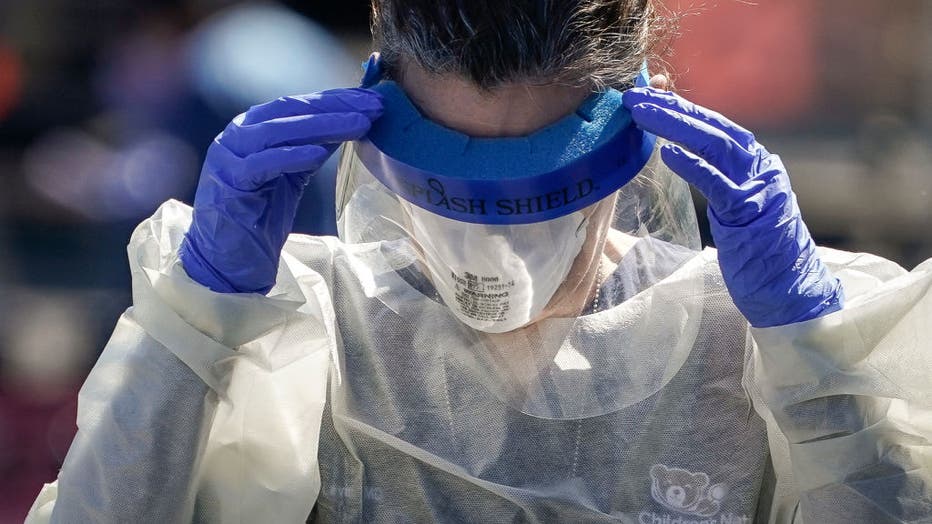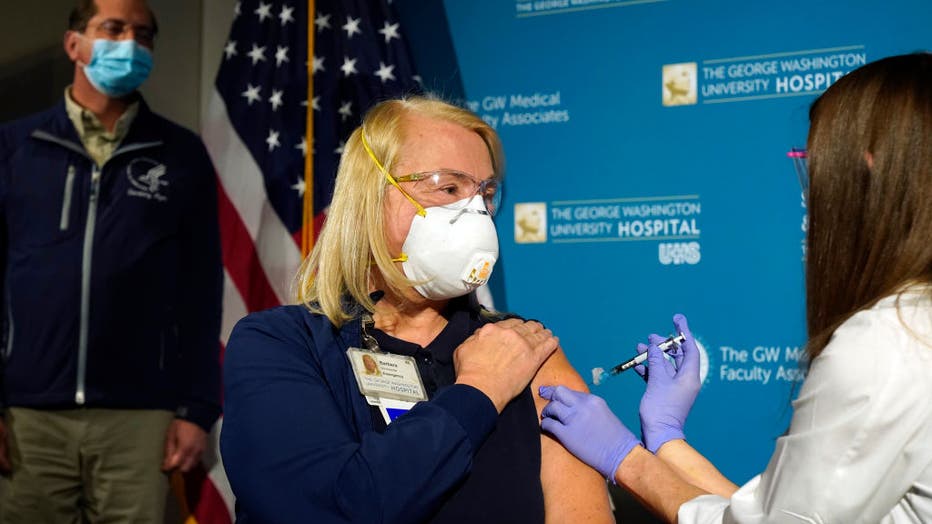US surpasses 300,000 COVID-19 deaths, according to Johns Hopkins
LOS ANGELES - More than 300,000 people in the U.S. have died from the novel coronavirus, according to the most recent data from Johns Hopkins University.
As of Dec. 14, there were more than 72.5 million global coronavirus cases and over 16 million confirmed cases in the United States alone.
The U.S. recorded more COVID-19 deaths on Dec. 3 alone than the total number of virus-related deaths reported in more than 100 countries since the onset of the pandemic.
RELATED: US reports more COVID-19 deaths in single day than over 100 countries have since pandemic began
A record 3,157 deaths were reported Dec. 3 in the U.S., according to a tally kept by Johns Hopkins University. That number is far higher than the record previously set on April 15, when the New York metropolitan area was the epicenter of the U.S. outbreak.
Last week, the U.S. Centers for Disease Control and Prevention released its latest forecast of expected U.S. coronavirus deaths, predicting that between 12,600 and 23,400 Americans will die of COVID-19 during the week ending in Jan. 2.By Jan. 2, the health agency is also predicting that between 332,000 and 362,000 Americas will have died from the novel coronavirus since the beginning of the pandemic.
And in the first five days of December, more than 1 million Americans were newly diagnosed with COVID-19, compounding the record-high averages the country continues to face just as U.S. regulators approved emergency use of Pfizer’s coronavirus vaccine.
Dr. Michael Ryan, the World Health Organization’s chief of emergencies, said earlier this month: “The epidemic in the U.S. is punishing. It’s widespread. It’s quite frankly shocking to see one to two persons a minute die in the U.S. -- a country with a wonderful, strong health system, amazing technological capacities.”
Ryan said that the U.S. accounted for one-third of all world cases over the last several weeks and that the “brutal reality” is that holiday hugs are ill-advised.
Meanwhile, the biggest vaccination campaign in U.S. history kicked off Monday as health workers rolled up their sleeves for shots to protect them from COVID-19.
For health care workers, who along with nursing home residents will be first in line for vaccination, hope is tempered by grief and the sheer exhaustion of months spent battling a coronavirus that still is surging in the U.S. and around the world.
While the U.S. hopes for enough of both vaccines together to vaccinate 20 million people by the end of the month, there won't be enough for the average person to get a shot until spring.
The White House coronavirus task force warned that current vaccination plans won’t necessarily have dramatic impact on the spread of the disease until at least late spring of 2021.
RELATED: First US COVID-19 vaccinations given as shipments arrive nationwide
“The current vaccine implementation will not substantially reduce viral spread, hospitalizations, or fatalities until the 100 million Americans with comorbidities can be fully immunized, which will take until the late spring,“ the report read. "Behavioral change and aggressive mitigation policies are the only widespread prevention tools that we have to address this winter surge."

A medical professional from Children's National Hospital works at a coronavirus drive-thru testing site for children age 22 and under at Trinity University on April 2, 2020 in Washington, DC. (Photo by Drew Angerer/Getty Images)
The report, which has been distributed weekly detailing current COVID-19 trends for each state added that while imminent arrival of vaccines provides “hope," it will still take months for people to see effects.
"The testing expansion across November has been a remarkable achievement and will be needed to effectively address this winter surge; continue efforts to expand capacity and make testing easily accessible to all populations, particularly in communities that are undertesting," the report said. "Mitigation efforts must increase, including the implementation of key state and local policies with an additional focus on uniform behavioral change including masking, physical distancing, hand hygiene, no indoor gatherings outside of immediate households, and aggressive testing to find the asymptomatic individuals responsible for the majority of infectious spread."

Nurse Lillian Wirpsza (R) administers a COVID-19 vaccine to emergency department nurse Barbara Neiswander at George Washington University Hospital on December 14, 2020 in Washington, DC. (Photo by Jacquelyn Martin-Pool/Getty Images)
The FDA, considered the world’s strictest medical regulator, said the Pfizer-BioNTech vaccine, which was developed at breakneck speed less than a year after the virus was identified, appears safe and strongly protective, and the agency laid out the data in a daylong public meeting last week for scientists and consumers alike to see.
RELATED: First shipment of Pfizer COVID-19 Vaccine departs from Michigan plant
“Please, people, when you look back in a year and you say to yourself, ‘Did I do the right thing?’ I hope you’ll be able to say, ‘Yes, because I looked at the evidence,’” Dr. Francis Collins, director of the National Institutes of Health, said Sunday on NBC’s “Meet the Press.” “People are dying right now. How could you possibly say, ‘Let’s wait and see’?”
Still, the vaccine was cleared for emergency use before a final study in nearly 44,000 people was complete. That research is continuing to try to answer additional questions.
For example, while the vaccine is effective at preventing COVID-19 illness, it is not clear if it will stop the symptomless spread that accounts for half of all cases.
The shots still must be studied in children and during pregnancy. But the American College of Obstetricians and Gynecologists said Sunday that vaccination should not be withheld from pregnant women who otherwise would qualify.
The Associated Press contributed to this story.



